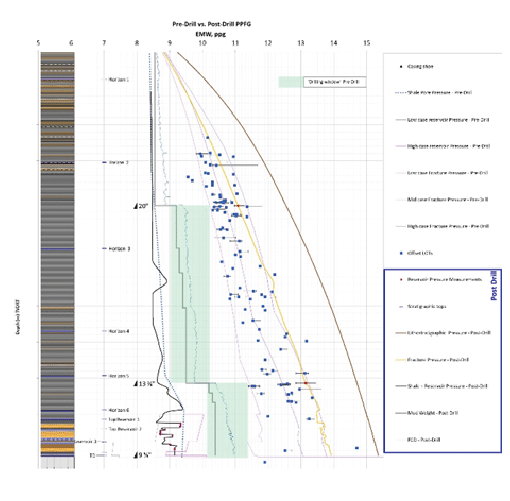
Geopressure & Geomechanics
We offer specialist geomechanical modelling services which include pore pressure & fracture gradient (PPFG) prediction, wellbore stability (WBS) assessment, development of predictive regional pressure models and pressure cell mapping, as well as seismic velocities for geopressured analysis.
Pore Pressure & Fracture Gradient (PPFG) analysis and prediction
Whether a well is onshore, offshore or in deepwater, wellbore design & architecture is often governed by PPFG, especially in Exploration and Appraisal. Understanding the pore pressure and fracture gradient regime which defines the “drilling window” of a well is key to the safe and efficient execution of the well. When the drilling window is accurately predicted, the appropriate mud weights may be selected, thereby avoiding costly situations of kicks and/or losses during the drilling phase. The PPFG regime also plays an important role in field development planning as reservoir depletion and/or injection will affect the fracture gradient, linked to reservoir pressure through stress coupling. Depleting shallower reservoirs before deeper ones or depleting reservoirs too much can significantly narrow or close the drilling window, result in more expensive wells and cause unwanted changes in well sequencing.
We offer a Pore Pressure & Fracture Gradient (PPFG) analysis and prediction service.
Drilling data, log data and seismic velocity data are analysed and commingled with the geological understanding to build the PPFG “profile” of wells and paint the geopressured picture of an area. Forward predicting 1D or regional 3D PPFG models can also be built, using offset well PPFG interpretations and seismic data integrated with the local/regional geology.
We also offer PPFG peer-reviews for a second unbiased opinion on any PPFG studies, models or predictions; and tailored PPFG training courses complete with exercises for people wishing to widen their field of understanding or expertise.

